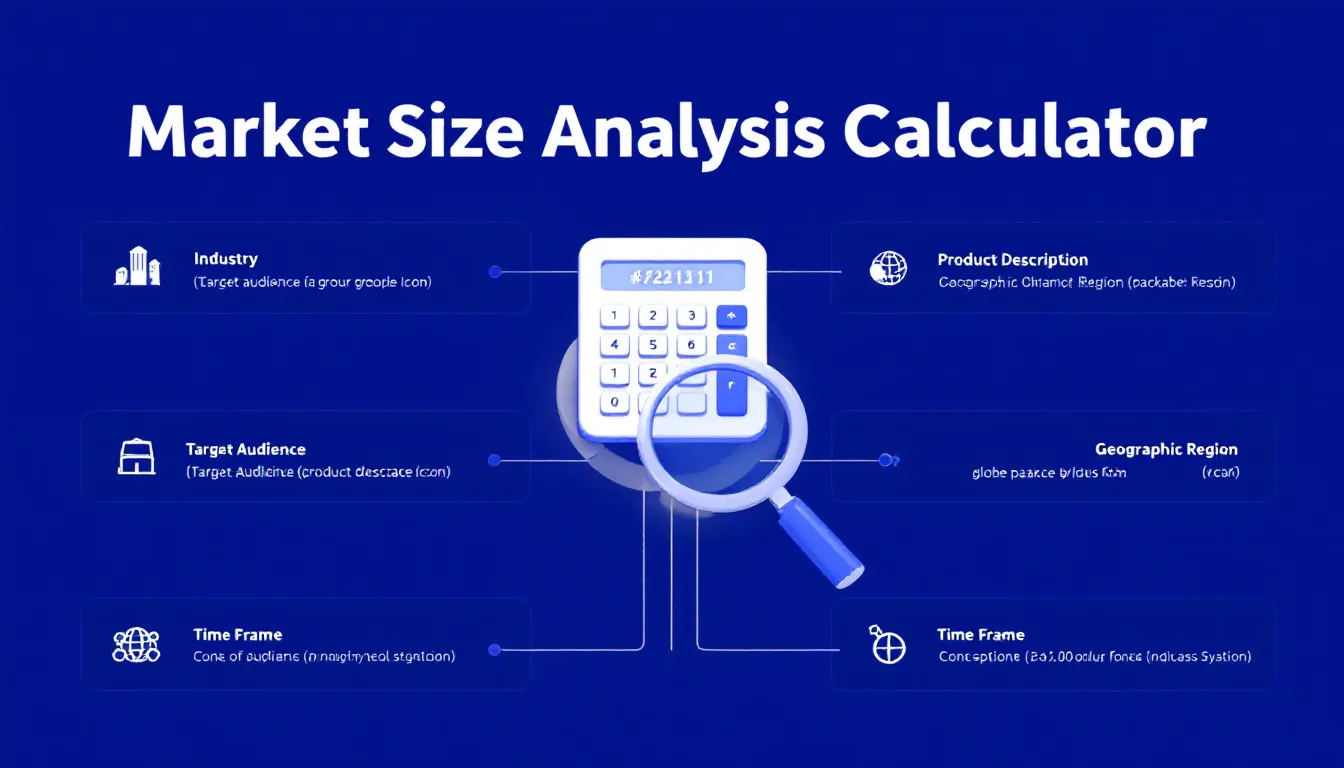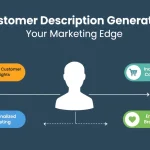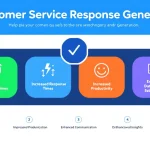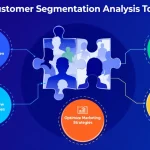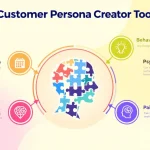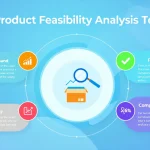Analyzing market data...
Is this tool helpful?
How to Use the Market Size and Growth Analysis Tool Effectively
This comprehensive market analysis tool helps businesses evaluate market potential and growth opportunities through a structured approach. Here’s a detailed guide on using each field:
Input Fields Guide
- Industry/Market Segment: Enter your specific industry focus. For example:
- “Electric Vehicle Manufacturing”
- “Plant-based Food Products”
- Target Audience: Define your customer segment precisely. For example:
- “Urban professionals aged 25-40 interested in sustainable transportation”
- “Health-conscious millennials with disposable income”
- Product Description: Provide detailed information about your offering, including key features and benefits that address customer needs.
- Geographic Region: Specify your target market location – from local to global scale.
- Time Frame: Input your desired analysis period for forecasting market growth.
Understanding Market Size and Growth Analysis Tool
This sophisticated tool combines market research principles with analytical frameworks to provide comprehensive insights into market opportunities. It evaluates multiple factors including:
- Total Addressable Market (TAM)
- Serviceable Available Market (SAM)
- Serviceable Obtainable Market (SOM)
- Growth trajectory and market dynamics
- Competitive landscape analysis
Core Analysis Components
The tool utilizes the following market sizing formula:
$$TAM = N × P × F$$Where:
- N = Total number of potential customers
- P = Average purchase price
- F = Purchase frequency per year
Benefits of Using the Market Analysis Tool
Strategic Decision Making
- Data-driven market entry strategies
- Resource allocation optimization
- Risk assessment and mitigation
- Competitive positioning insights
Business Planning
- Investment justification
- Revenue potential evaluation
- Growth trajectory mapping
- Market share projections
Problem-Solving Capabilities
Market Uncertainty Reduction
The tool addresses common market analysis challenges through:
- Systematic evaluation of market parameters
- Structured approach to customer segmentation
- Evidence-based growth projections
- Competitive landscape mapping
Strategic Gap Analysis
Identifies opportunities through:
- Unmet customer needs assessment
- Market penetration potential
- Competitive advantage identification
- Growth barrier analysis
Practical Applications and Use Cases
Example 1: SaaS Market Analysis
Consider a B2B SaaS company analyzing the project management software market:
- Industry: Enterprise Software
- Target: Mid-sized technology companies
- Product: AI-powered project management platform
- Region: North America
- Timeframe: 2024-2027
Example 2: Retail Market Expansion
A sustainable fashion brand evaluating market potential:
- Industry: Eco-friendly Fashion
- Target: Environmentally conscious consumers
- Product: Recycled material clothing line
- Region: European Union
- Timeframe: 3 years
Frequently Asked Questions (FAQ)
Q: How detailed should my product description be?
A: Include key features, unique selling propositions, and primary benefits. Focus on aspects that differentiate your product and address specific customer needs.
Q: Can I analyze multiple market segments simultaneously?
A: Yes, you can perform separate analyses for different segments and compile the results for a comprehensive view.
Q: What’s the best timeframe for market analysis?
A: Most businesses benefit from a 3-5 year projection period, allowing for meaningful trend analysis while maintaining forecast reliability.
Q: How should I define my geographic region?
A: Choose based on your business capacity, distribution capabilities, and target market characteristics. Start specific and expand as needed.
Q: Can I use this tool for emerging markets?
A: Yes, the tool is particularly valuable for emerging markets, helping identify growth patterns and market potential.
Q: Should I include competitor analysis in my product description?
A: Yes, mentioning key differentiators and competitive advantages helps create a more accurate market analysis.
Q: How often should I update my market analysis?
A: Regular updates every 6-12 months help maintain relevance and capture market changes.
Q: Can I use this tool for service-based businesses?
A: Absolutely, the tool is equally effective for analyzing service markets, considering service-specific factors like delivery capacity and scalability.
Advanced Features and Considerations
Market Dynamics Analysis
The tool incorporates various market factors:
- Economic indicators
- Industry trends
- Technological developments
- Regulatory environment
- Consumer behavior patterns
Growth Pattern Recognition
Identifies market growth patterns through:
- Historical data analysis
- Trend extrapolation
- Market maturity assessment
- Innovation impact evaluation
Best Practices for Optimal Results
Data Quality
- Use reliable industry sources
- Cross-validate information
- Update data regularly
- Document assumptions
Analysis Framework
- Follow systematic approach
- Consider multiple scenarios
- Include qualitative factors
- Review and adjust periodically
Important Disclaimer
The calculations, results, and content provided by our tools are not guaranteed to be accurate, complete, or reliable. Users are responsible for verifying and interpreting the results. Our content and tools may contain errors, biases, or inconsistencies. We reserve the right to save inputs and outputs from our tools for the purposes of error debugging, bias identification, and performance improvement. External companies providing AI models used in our tools may also save and process data in accordance with their own policies. By using our tools, you consent to this data collection and processing. We reserve the right to limit the usage of our tools based on current usability factors. By using our tools, you acknowledge that you have read, understood, and agreed to this disclaimer. You accept the inherent risks and limitations associated with the use of our tools and services.
